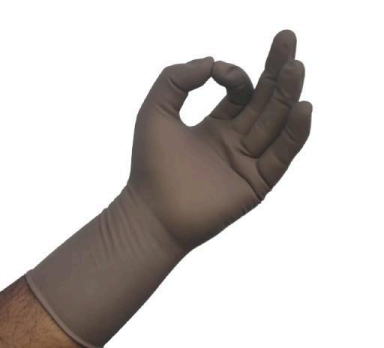Orthopedic surgical gloves are specially developed gloves to improve performance and safety of procedures in the field of orthopedics. This usually includes procedures on bones, joints, spines, and muscles. These gloves are built to endure the rigors of the task where puncture and tear can occur while performing the task. Orthopedic procedures require handling of heavy equipment and can go on for extended periods compared to other forms of surgeries.
Here's a quick overview of everything one needs to know about orthopedic surgical gloves:
Material Composition: These gloves are mainly made from latex, a naturally found rubber. The overall quality and specific attributes of the material depends largely on the users requirements and the procedure they are about to undertake. Latex materials are flexible and offer high levels of dexterity which can be processed further to suit the application.
Durability: Orthopedic surgeries are usually long and involve handling heavy equipment and human bones. This can cause tear or puncture in the glove easily if the material of the glove is not tough. For this reason, every pair of gloves is designed to withstand such conditions.
Grip: Handling equipment requires good grip on the surgical instrument. Any slip-up on this part can have grave consequences. For this reason, the glove has textured surfaces that prevent the occurrence of slipping during procedures.
Thickness: In addition to the material being used to make orthopedic gloves being inherently sturdy, these gloves are usually 30% thicker than average surgical gloves. This provides added protection against tears and punctures during a procedure.
Flexibility: Despite being thicker, these gloves are made to provide high levels of flexibility and dexterity which allows users to perform intricate procedures without any hassle.
Sterility: Like any other gloves, orthopedic gloves go through a series of sterilization processes to ensure every pair is free from microorganism or any particle that can cause unwanted reaction in the patient.
Fitting: Proper size and fit are crucial to ensure comfort and performance. These gloves come in various sizes to ensure it caters different wearers. Choosing the right size is important to ensure the healthcare professional can perform their duty effectively without undergoing fatigue. The goal is to keep it snug and not too tight or loose.
Regulatory Compliance: Orthopedic gloves are required to comply with multiple regulatory standards depending on the region and clients it serves. Some may be internal while other regulations are government mandated, such as ISO (International Organisation for Standardization), ISI(Indian Standards Institution), FDA (Food and Drug Administration), ASTM (American Society for Testing and Materials), etc.
